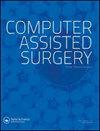Assisted therapeutic system based on reinforcement learning for children with autism
IF 1.9
4区 医学
Q3 SURGERY
引用次数: 5
Abstract
Abstract Assisted therapy is increasingly used in autism spectrum disorders (ASD) for improving social interaction and communication skills in recent years. A lot of studies have proven that the form of interactive games for therapy has a good effect on children with autism. Thus, our study provided an assisted therapeutic system based on Reinforcement Learning (RL) for children with ASD, which has five interactive subgames. As is well known, it is necessary to establish and maintain compelling interactions in therapeutic process. Therefore, we aim to adjust the interactive content according to the emotions of children with autism. However, due to the atypical and unusually differences in children with autism, most systems are based on off-line training of small samples of individuals and online recognition, so the existing assisted systems are limited in their ability to automatically update system parameters of new mappings. The integration of RL and Convolutional Neural Network (CNN)-Support Vector Regression (SVR) was used to deal with the updating online of prediction model’s weights. The normalized emotion labels were evaluated by the therapists. Eleven children with autism as subjects were invited in this experiment and captured facial video images. The experiment lasted for five weeks of intermittent assisted therapy, and the results were evaluated for the system and the therapy effect. Finally, we achieved a general reduction in the root mean square error of the model prediction results and labels. Although there is no significant difference in Social Responsiveness Scale (SRS) scores before and after assisted therapy (p value = 0.60), in individual subjects (Sub. 1, Sub. 2 and Sub.3), the SRS total score is significantly reduced (Average drop of 19 points). These results demonstrate the effectiveness of prediction model based on RL and show the feasibility of assisted therapeutic system in children with autism.基于强化学习的自闭症儿童辅助治疗系统
近年来,辅助治疗越来越多地用于自闭症谱系障碍(ASD),以改善其社交互动和沟通能力。许多研究证明,互动游戏的形式对自闭症儿童的治疗有很好的效果。因此,我们的研究为ASD儿童提供了一个基于强化学习(RL)的辅助治疗系统,该系统有五个互动子游戏。众所周知,在治疗过程中有必要建立和维持令人信服的相互作用。因此,我们的目标是根据自闭症儿童的情绪来调整互动内容。然而,由于自闭症儿童的非典型和异常差异,大多数辅助系统都是基于小样本个体的离线训练和在线识别,因此现有的辅助系统在自动更新新映射的系统参数方面受到限制。采用强化学习与卷积神经网络(CNN)-支持向量回归(SVR)相结合的方法在线更新预测模型的权重。标准化情绪标签由治疗师评估。实验邀请了11名自闭症儿童作为实验对象,并拍摄了面部视频图像。实验持续5周的间歇辅助治疗,并对系统及治疗效果进行评价。最后,我们实现了模型预测结果和标签的均方根误差的普遍降低。虽然在辅助治疗前后,社会反应量表(SRS)得分没有显著差异(p值= 0.60),但在个体(Sub. 1, Sub. 2和Sub.3)中,SRS总分显著降低(平均下降19分)。这些结果证明了基于RL的预测模型的有效性,也表明了辅助治疗系统在自闭症儿童中的可行性。
本文章由计算机程序翻译,如有差异,请以英文原文为准。
求助全文
约1分钟内获得全文
求助全文
来源期刊

Computer Assisted Surgery
Medicine-Surgery
CiteScore
2.30
自引率
0.00%
发文量
13
审稿时长
10 weeks
期刊介绍:
omputer Assisted Surgery aims to improve patient care by advancing the utilization of computers during treatment; to evaluate the benefits and risks associated with the integration of advanced digital technologies into surgical practice; to disseminate clinical and basic research relevant to stereotactic surgery, minimal access surgery, endoscopy, and surgical robotics; to encourage interdisciplinary collaboration between engineers and physicians in developing new concepts and applications; to educate clinicians about the principles and techniques of computer assisted surgery and therapeutics; and to serve the international scientific community as a medium for the transfer of new information relating to theory, research, and practice in biomedical imaging and the surgical specialties.
The scope of Computer Assisted Surgery encompasses all fields within surgery, as well as biomedical imaging and instrumentation, and digital technology employed as an adjunct to imaging in diagnosis, therapeutics, and surgery. Topics featured include frameless as well as conventional stereotactic procedures, surgery guided by intraoperative ultrasound or magnetic resonance imaging, image guided focused irradiation, robotic surgery, and any therapeutic interventions performed with the use of digital imaging technology.
 求助内容:
求助内容: 应助结果提醒方式:
应助结果提醒方式:


